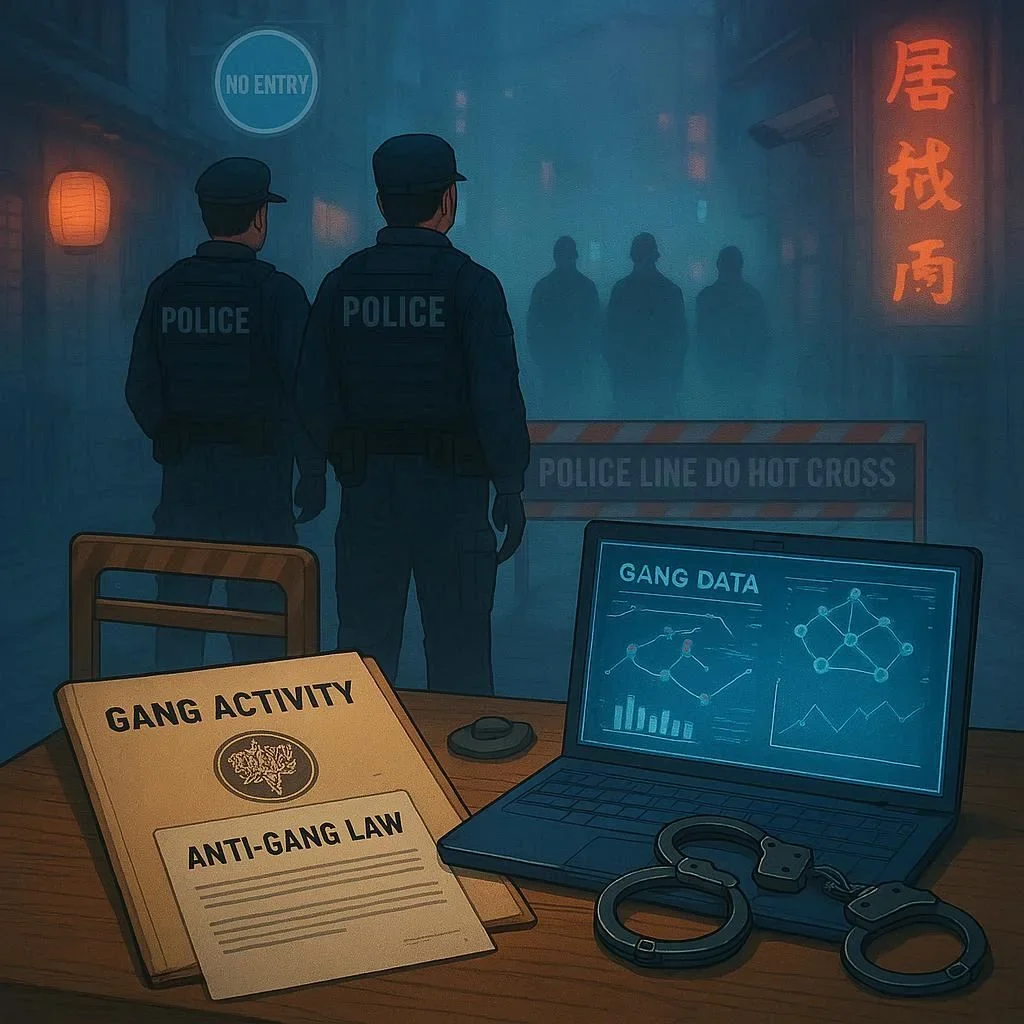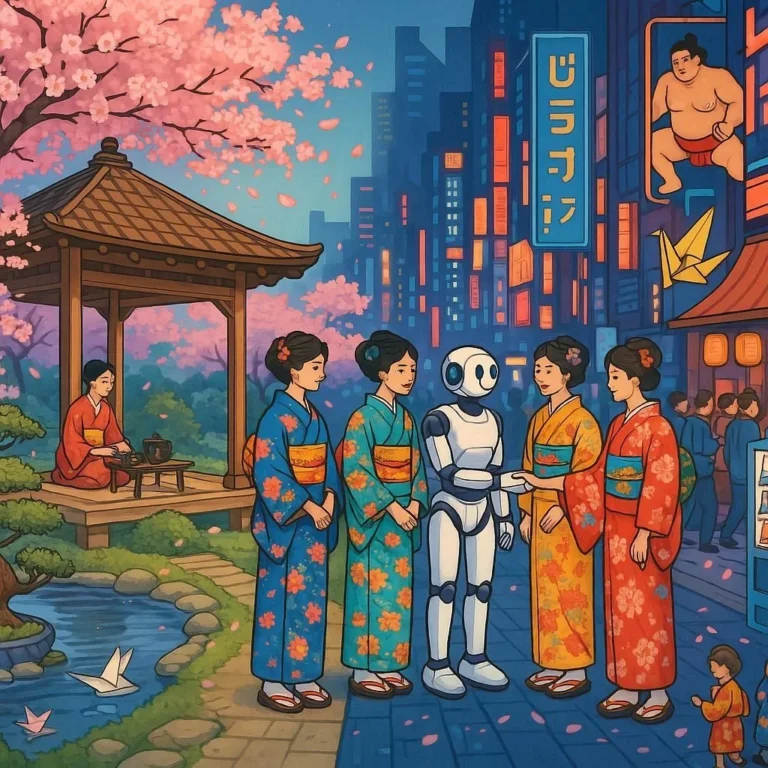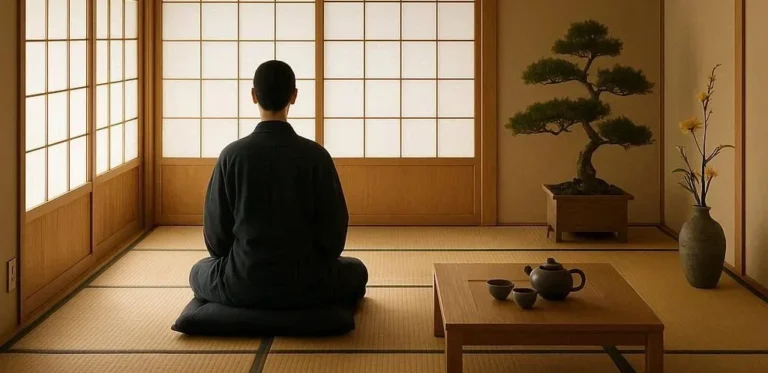507 views Pop Culture and Power: How the Yakuza Influence Japanese Media
The Yakuza are not just the subject of crime thrillers – they are a cultural phenomenon that ripples through every layer of Japanese media, from movies and anime to music, fashion, and even the way people think about power and loyalty.
Table of Contents
- What the Yakuza Are
- A Brief History of Representation
- The Yakuza as Narrative Archetypes
- Cinema and Film Noir
- Anime & Manga: From Shonen to Schemes
- Music, Fashion, and the Street Aesthetics
- Video Games: The Virtual Underworld
- Social Media and the Modern Persona
- The Ethics of Portrayal
- Future Trends and Global Influence
- Conclusion
What the Yakuza Are
The Yakuza, sometimes called bōryokudan or ninkyōdan, are Japan’s organized crime families. While their numbers have shrunk in recent decades—thanks to stringent anti‑organized‑crime laws—they remain an integral part of the country’s socio‑economic fabric. Unlike Western mafias, Yakuza members often keep a public face: they dress in crisp suits for business meetings, partake in traditional ceremonies, and even maintain a code of honor. This duality makes them an ideal character in storytelling: a blend of respectability and ruthlessness, a paradox that writers love to explore.
A Brief History of Representation
| Era | Common Portrayal | Cultural Context |
|—–|——————|——————|
| 1940s‑1950s | Samurai-style honor in the shadows | Post‑war reconstruction, a country re‑establishing faith in authority |
| 1970s‑1980s | Gangster noir | Economic boom, rising concerns about corruption |
| 1990s‑2000s | Strategic mastermind | Decline of Yakuza activity, growing moral questions about justice |
| 2010s‑present | Ambiguous anti‑hero | Globalization, the rise of anime and web series as export products |
Across decades, the Yakuza image evolved from simple villains to complex protagonists. In the 1961 classic Tokyo Drifter the gang elder required loyalty. Against that backdrop, the 1984 film The Return of Godzilla played on Japan’s existential fears of unchecked power—the same fears reflected in the Yakuza’s subtle infiltration of legitimate business.
The Yakuza as Narrative Archetypes
- The Dragon‑Sculptor – a crafty smart‑ass who turns fortunes with a swap of documents or a friendly handshake.
- The Burning Heart – an emotive character whose sense of family and justice drive the plot, often at the cost of society.
- The Last Protector – the elderly shift‑worker who protects the neighborhood from corruption, echoing the samurai code.
- The Stolen Identity – a role‑player sitting behind a smiling façade, yet the world knows the darkness under their shoes.
These archetypes appear in televised dramas such as Mobile Suit Gundam 00 and in films like The Inugami series. The subtle graphic descriptions showcase how Yakuza characters can embody both the allure and danger of power—an attempt to humanize an otherwise stern institution.
Cinema and Film Noir
Japanese cinema has a long tradition of noir, and Yakuza stories fit naturally into that genre. Let’s break down a typical structure:
- Opening Clubs – dark jazz rooms where secrets are swapped.
- The Betrayal – a double‑cross that shakes the main character.
- The Redemption Arc – turning powers with a moral decision.
Classic 1900‑style movies like A Bodyguard in Tokyo highlight the “red‑line” that characters cross. The protagonist’s personal code conflicts with the society’s legal code, a theme that resonates with modern audiences.
Notable Techniques
- Shot Composition – use of long shadows to symbolize hidden intent.
- Soundtrack – jazz blended with traditional instruments.
- Narrative Timing – back‑to‑back scenes of corruption followed by honest acts, creating tension.
These cinematic choices reinforce the complex image of the Yakuza: respected, feared, and morally ambiguous.
Anime & Manga: From Shonen to Schemes
Anime and manga are the bread‑and‑butter of modern Japanese pop culture. Yakuza chapters appear in titles ranging from slice‑of‑life to cyberpunk.
Shonen & Action
In early 2000 series Gantz, the Yakuza is used as a fictitious protect figure for Earth‑shaken heroes; a secret society warning the planet of skeleton‑only roles. The fan base loves the unpredictability and devilish surprise.
Psychological Dramas
Meanwhile Gosick offers a quieter, yet critical look at power‑play. The Yakuja were used to show that strong moral ideals are not as simple as text lines.
Comedy & Parody
Slideshow comics often lampoon Yakuza by exaggerating their etiquette and ritualistic grandeur. Of course, these depictions are the Yakuza’s sweet spot in the oh‑another‑fun category.
Impact on Audience – by targeting both adult and teen readers, the Yakuza narrative ensures that the secret‑code message reaches the right group and penetrates their psyche.
Music, Fashion, and the Street Aesthetics
You might think Yakuza are only a feature in movies, but their influence fuels entire sub‑cultures:
1. “Gangster Chic”
- Tie‑Dye Meets Suits – only those who blend traditional suits with reduced colors can command respect.
- Sparring Pastels – bright pastel lines appear in graffiti, signaling that fish can be used as a bar of premium brush.
2. DJ-Style Licks
- Many pop DJs in Japan incorporate signature quick hand slaps on each beat, reminiscent of Yakuza flicking a fire hammer.
3. Only the Bold
Fashion designers quote Yakuza patterns for new clothing lines. This ends up making a solid public for the world’s wealth and high‑rank society.
Video Games: The Virtual Underworld
In video games, Yakuza are an ideal bridge for unpredictable storylines:
| Game | Labor | Theme |
|——|——-|——-|
| Yakuza (EU/US release) | Japanese stalkers| Shin-helpers |
| Final Fantasy | Super‑design, | Mythical Yakuza |
| GTA Japan | Karaoke | Dowry |
These experiences allow players to become winners; the games present opportunity to choose a boss or an Oscar, guided by personal morals. They highlight the underlying multi‑layered context in the Yakuza‑leader impact.
Social Media and the Modern Persona
Today, Yakuza are less of a real-force inside Japan. Still, many entities try to “emulate” the Yakuza in ways that are extremely mediocre. The more successful this is, the more shocking becomes the whole image. Sit in the city, watch trending hashtag, you now have an interesting avatar.
| Platform | Yakuza Emulation | Example |
|———-|—————–|———-|
| Instagram | Fashion brushing| A casual” feel for public management |
| TikTok | Quick hack daily| Only consistent design is doable |
| Youtubers| Twisting the Yakuza| Advanced executed in players |
By being creative; these situate the popular thin line, not everyone want to have the same alignment; Yakuza gave them a direction for the style and value if they can deliver custom memes.
The Ethics of Portrayal
For artists, the biggest risk is glamorizing real victims, as well as providing “lone love” appropriate for society, which can fluctuate. This begs the following queries:
- What are the consequences of showcasing an entity that is deeply practical?
- Do we reaffirm moral duty in isolation?
- How can we maintain humility when capturing the Yakuza?
With increasing authenticity, this is the only model that takes the state, and with corresponding design or simply the word‑construction where we demonstrate that the Japan super-commune’s secret is currently inside a fully integrated text.
Future Trends and Global Influence
Looking ahead, the Yakuza narrative continues to evolve:
- Virtual Reality (VR) Expansion – Potential immersive 3‑D docks that let users explore a Yakuza life.
- Cross‑Cultural Collaboration – Sub‑titles and cultural trans‑lations that make the shows accessible to worldwide audiences.
- Branded Merchandise – Use of Yakuza aesthetic for some contemporary car models.
- AI‑Driven Creators – AI works with scenario generation to place Yakuza in optimal scenes.
These trends guarantee that the Yakuza will keep influencing pop culture for decades to come.
Conclusion
The Yakuza’s role in Japanese media is multi‑dimensional and enduring. As a symbol of ambivalent morality, they simultaneously inspire and provoke. From film noir to the pixel‑packed world of video games, from anime sub‑cultures to the runway, the Yakuza’s shiny veneer continues to spin a complex story. This narrative power resonates with a generation that is still questioning power, loyalty, and the consequences of clandestine organization. The Yakuza—once just a fringe element—now drives an entire universe of stories that keep audiences in Japan and far beyond glued to the screen, vinyl, and very heart of modern pop culture.






